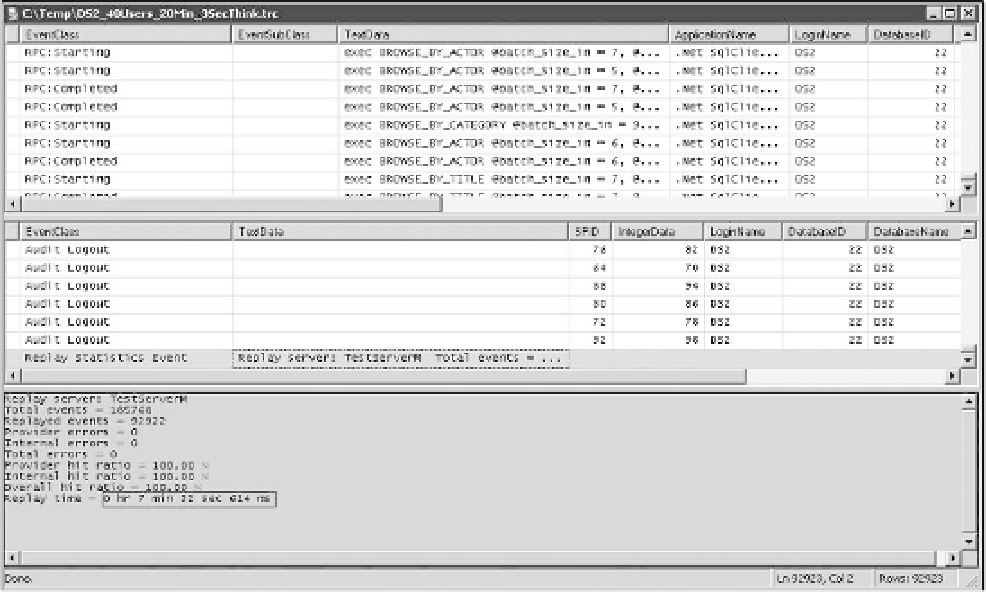Databases Reference
In-Depth Information
Figure 10-22 shows the workload replay on the server TestServerM.
Figure 10-22
To summarize the result from TestServerM in Figure 10-22, the SQL Profiler replayed the same 92,922
events in 7 minutes 32 seconds. It finished in less than half the time of the replay from the server Test-
ServerL. This result is expected since this server has four processors and three times more physical
memory, and it has SQL Server 2005 installed. For detailed analysis on hardware improvement, you can
measure performance on hardware devices during the replay. In this scenario, we are more interested in
overall SQL query response time in terms of the whole workload.
Figure 10-23 shows the workload replay on the server TestServerH.
To summarize the result from TestServerH in Figure 10-23, the replay finished in 3 minutes and 52 sec-
onds. It was more than four times faster than the reference measurement (17 minutes and 10 seconds)
from the server TestServerL. This impressive result was achieved by the combination of better hardware
and SQL Server 2005 (x64).
To summarize this scenario, we collected a workload from a SQL Server 2000 instance and replayed the
workload on three servers with different hardware and software configurations. During each workload
replay, no additional user applications were running on the server. Table 10-3 shows the results. With a
well-defined workload, SQL Profiler Replay provides sufficiently accurate estimates of how the workload
performs on a target server.













Search WWH ::

Custom Search